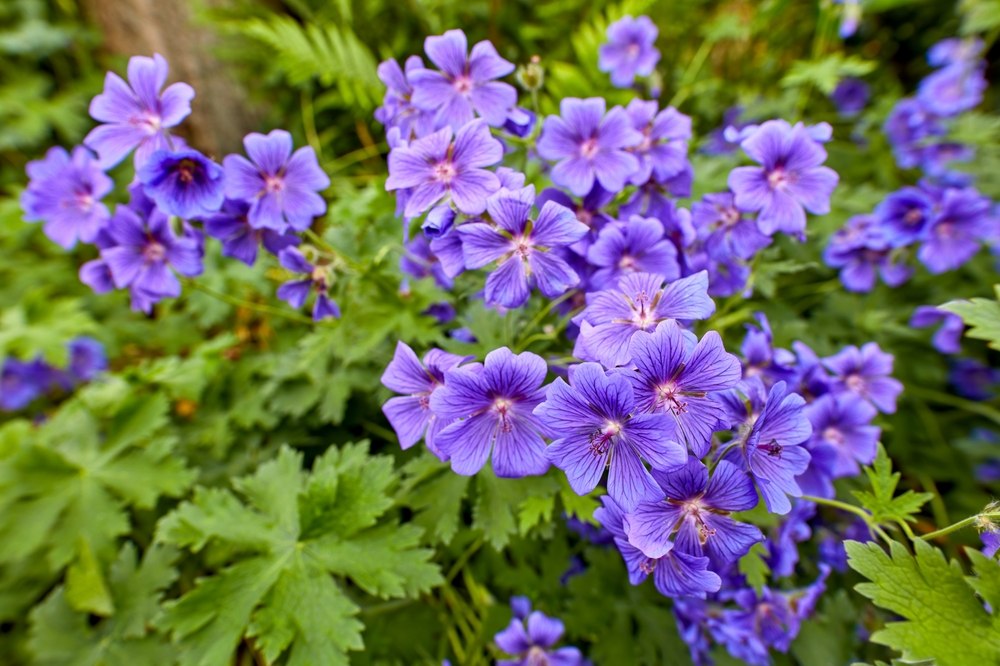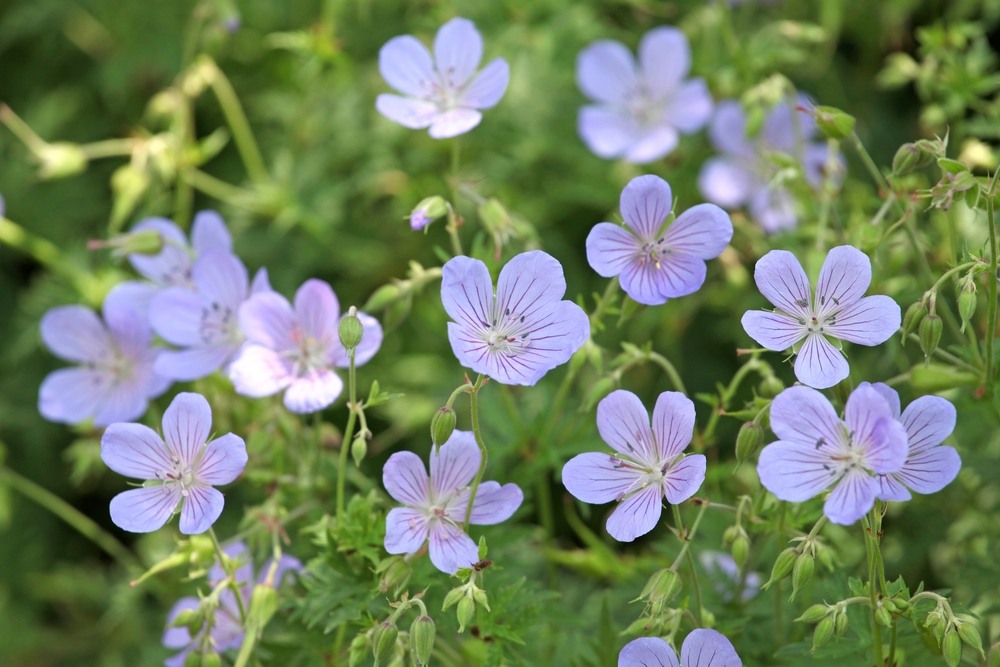
Geraniums are popular plants known for their vibrant colors and ability to thrive in various environments.
However, as with any plant, proper care is essential to maintain its health and beauty.
One aspect of geranium care that often raises questions among gardeners is the process of dividing them.
Dividing geraniums can help promote vigorous growth and offer an opportunity to grow new plants from a single mother plant.
Knowing when to divide geraniums is an essential skill for gardeners to maximize the plant’s potential. The best time to divide geraniums is typically in the early spring or fall.
During these times, the plant experiences a period of dormancy, and dividing them will cause minimal stress. This also allows the newly separated plants to become established before the more demanding growing seasons of summer and winter.
To ensure a successful division, you’ll need to identify the appropriate type of geranium and follow the correct steps for that specific variety. Some geraniums, like the clump-forming perennial types, are better suited for division than others.
By understanding the unique needs and characteristics of the geraniums you’re working with, you’ll be able to create beautiful and healthy plants that flourish in your garden.
Why Divide Geraniums?
Dividing geraniums is a friendly and beneficial approach to boosting their health and ensuring a more vibrant appearance. By dividing your geraniums, you can achieve several advantages for both the plants and yourself as a gardener.

Firstly, dividing geranium plants helps improve their overall growth and performance. As the plants grow, they can become crowded and compete for nutrients, light, and space. By dividing them, you provide each plant with the necessary resources to grow stronger and produce more abundant foliage and flowers.
Secondly, division is an excellent method for propagating your geraniums. By splitting the plants into smaller sections, you can increase the number of plants in your garden, gift some to friends or family, or even trade them with fellow gardeners.
This allows you to expand your geranium collection without needing to buy new plants.
Moreover, dividing geraniums can help improve their overall health by reducing the risk of pests and diseases. Crowded plants can create an environment that fosters the spread of infections, pests, or fungus.
Separating the plants allows for better airflow and reduces the likelihood of these issues, keeping your geraniums healthier.
Finally, the process of dividing geraniums is straightforward and requires minimal effort. It’s an approachable task suitable for gardeners of all levels, and only involves cutting the plant in smaller sections and replanting them. This is an ideal way to rejuvenate your plants and maintain a lively garden.
In summary, dividing geraniums is beneficial for the plant’s growth, health, and propagation. It’s a simple and friendly approach that every gardener should consider to maintain a thriving and beautiful garden.
Optimal Season to Divide Geraniums

Dividing your geraniums is a great way to propagate new plants and keep the original plant healthy. The ideal time to do this is in early spring or fall.
During early spring, geraniums are just starting to emerge from their dormant period. This is a great time to divide them because the plants will have plenty of time to become established before the heat of summer. Make sure to perform the divisions before the growth season is in full swing.
In fall, as the weather begins to cool, geraniums will slow down their growth, preparing to enter dormancy. Dividing geraniums in the fall gives them the opportunity to establish roots in their new location before the winter months, ensuring they’re ready for next year’s growth.
Remember that timing is crucial for successful division and growth. If you try to divide your geraniums in the middle of their growth season, they may struggle to adapt to their new environment and could become stressed, ultimately affecting their overall health.
And finally, always monitor weather conditions when dividing geraniums. Avoid extremely hot, cold, or wet days – mild and sunny conditions are best for this task. By taking these factors into consideration, you’ll be on your way to a flourishing geranium collection.
Understanding the Division Process

Dividing geraniums is a useful method to propagate these beautiful plants. It not only helps increase their numbers but also ensures their vitality. To get started, it’s essential to understand the division process and follow proper techniques.
Identifying Division Points
When looking to divide your geraniums, first locate appropriate division points on the plant. Healthy geraniums typically have multiple stems growing from the root ball, making it easier to identify which sections to separate. Look for robust, well-developed stems with a minimum of two to three healthy leaves. These are the ideal points for division. Make sure to avoid stems that are weak or showing signs of disease or pest infestation.
Correct Division Technique
To divide your geraniums, follow these simple steps:
- Water the plant well: One day before dividing, water the geraniums thoroughly to ensure that the soil is moist and roots are less stressed during division.
- Gently remove the geranium from its pot: Carefully slide the plant out of its container, keeping the root ball intact as much as possible.
- Examine the root ball: Look for natural separations between the stems and roots, which will be your division points.
- Make the divisions: Gently pull apart the selected stems at their division points, taking care to minimize root damage. If necessary, use a clean, sharp knife to cut through any stubborn roots.
- Replant the divisions: Plant each division into a new container filled with well-draining potting soil, ensuring the root ball is completely covered. Water the new geraniums thoroughly and place them in a location with bright, indirect sunlight.
By following these steps and taking care to identify proper division points, your newly divided geraniums will thrive and continue to bring beauty to your garden or home.
Post-Division Care

Immediate Aftercare
After dividing your geraniums, it’s important to give them the proper care to help them recover and grow. Immediately after division, water the newly divided geraniums thoroughly. This will help the roots establish themselves and encourage recovery.
Place the divided geraniums in a location with indirect sunlight for the first few days. Gradual exposure to direct sunlight can follow, ensuring that the plant won’t suffer from light shock. Keep the soil consistently moist but not waterlogged. Overwatering can lead to root rot.
Long-Term Maintenance
Once the divided geraniums have settled in their new pots, you can shift your focus to long-term maintenance. Ensure they receive at least 6-8 hours of sunlight daily. Keep an eye on the moisture levels of the soil, allowing it to dry out slightly between waterings.

Fertilization: Provide balanced, slow-release fertilizer monthly during the growing season. A general-purpose fertilizer like 10-10-10 can work well.
Pruning: Regularly pinch back the geraniums to encourage branching and maintain a bushy shape. Remove any dead or yellowing leaves, and trim back leggy stems.
Pest Control: Inspect your geraniums for common pests like aphids and spider mites. Use insecticidal soap or neem oil for treatment if needed.
Following these long-term maintenance tips will ensure that your divided geraniums thrive and continue to be beautiful, vibrant plants in your garden or home.
Common Mistakes to Avoid
One common mistake that gardeners make when dividing geraniums is not allowing enough time for the plant to recover. It is essential to give your geraniums at least a few weeks of cushion between dividing and the first frost, to help them establish. Dividing too close to winter can put the plant at risk.
Another mistake to avoid is over-watering after division. While it is important to keep the soil moist, over-watering can lead to rot and root damage. Monitor the moisture level and water accordingly, ensuring that the soil is not saturated but remains damp and well-draining.
Here are some other common mistakes to avoid when dividing geraniums:
- Using dull or dirty tools: Make sure to use sharp and clean cutting tools for dividing geraniums. This will ensure cleaner cuts with less risk of damage and disease.
- Dividing too often: Geraniums need time to grow and recover after being divided. Dividing them more frequently than necessary can inhibit their overall growth and health. Typically, geraniums should be divided every 3-4 years.
- Ignoring root health: When dividing your geraniums, it’s crucial to examine the root system. If you notice any dead, discolored, or damaged roots, make sure to remove them before replanting. This helps to promote a healthier plant and prevents the spread of disease.
By taking the time to avoid these common mistakes, you can help ensure healthier, more thriving geraniums in your garden.














